|
The
target was Friedrichshafen - vital industrial centre on the shores of
Lake Constance. There was nothing to make the operation any more
exciting or spectacular for the crews: it was just another night raid.
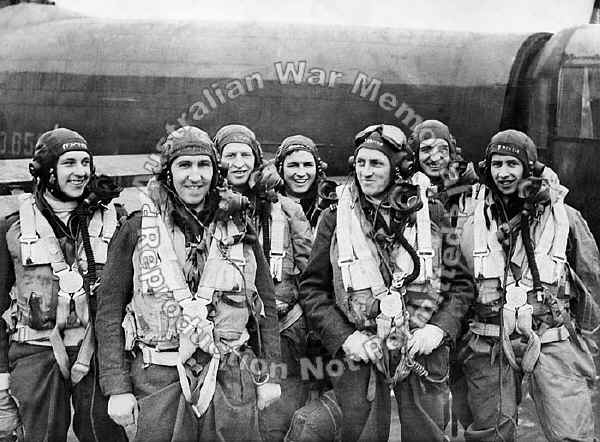 |
| RAF Station Binbrook. A Bomber Crew
of No. 460 (Lancaster) Squadron, RAAF. Identified personnel are:
1874746 Sergeant Douglas George Champkin, Engineer (RAF) (1);
408034 Flying Officer Marmion Wilfred Carroll, DFC, Navigator (2);
414807 Flying Officer T J Lynch, Rear Gunner (3); 404467 Flying
Officer Hector Ronald Harrison, Wireless Operator (4); 404507
Squadron Leader Eric George Delancy Jarman, DFC, Pilot (5); 411227
Flying Officer Ronald Leslie Neal, Mid-Upper Gunner (6); 404503
Flying Officer Francis Gordon Jackson, DFC, Bomb Aimer (7). |
But,
by morning, the subjects in the unfinished painting had been reported
missing. Nothing more was known. Hope of the aircraft limping home
gradually waned and then died.
Stella
Bowen continued work on her picture and eventually completed it with the
aid of photographs of the airmen and an artist's facility for
remembering detail.
 |
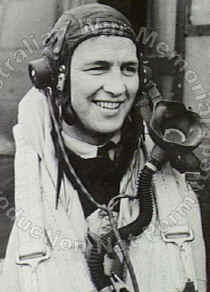 |
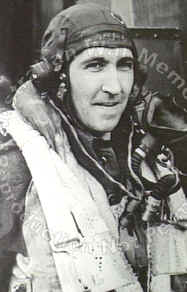 |
| 404507 Squadron Leader
(Sqn Ldr) Eric Gordon Delancy Jarman, DFC, No. 460 (Lancaster)
Squadron, RAAF, pilot, of Yeppoon, QLD. |
404467 Flying Officer
(FO) Hector Ronald Harrison, 460 Squadron, RAAF, of Lismore, NSW. |
Flying Officer (FO)
Marmion Wilfred Carroll, DFC, 460 Squadron, RAAF, of Brighton,
Vic. |
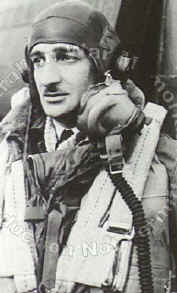 |
 |
 |
| 411227 Flying Officer
Ronald Leslie Neal, 460 Squadron, RAAF, of Greenthorpe, NSW. |
404503 Flying Officer
(FO) Francis Gordon Jackson, DFC, 460 Squadron, RAAF. |
Sergeant D.G. Champkin,
(RAF) serving with a bomber crew, 460 Squadron, RAAF. |
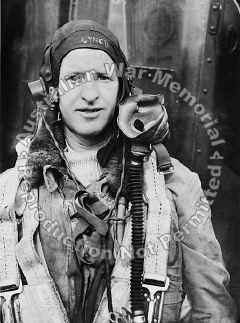 |
In
September of that same year came the 1st news of the fate of the crew.
The parents of Flying-Officer T. J. Lynch of Queensland - the
rear gunner-received a small postcard from Dulag Luft camp in
Germany.
<<
414807 Flying Officer (FO) T J Lynch,
460 Squadron, RAAF. FO Lynch and the other members of the crew
posed in their spare time for Australian Official War Artist
Stella Bowen who painted 'Bomber Crew'.
Before this painting was completed, the crew had
been posted missing.
Eventually it was learned that FO Lynch was the
only survivor of a crash on 28 April 1944 in which he was badly
injured, his right leg eventually being amputated.
|
|
It
was in the unmistakable handwriting of their son - he was alive and a
prisoner of war. He was subsequently repatriated in the fifth exchange
of prisoners arranged between the Allies and Germany, and arrived back
in England at Liverpool on 5 February 1945.
Their
aircraft, he said, was shot down in the vicinity of Lahr, near the Swiss
border that night in April.
Lynch was unable to remember whether or not
he had jumped from the plane. In fact, he remained unconscious until 4
May, when he awoke as a patient in a German air-force hospital at
Baden-Baden.
A
German doctor answered his anxious inquiries concerning the fate of his
comrades and told him that all had been killed.
Lynch
himself was badly injured and spent many weary weeks in various
hospitals.
Following amputation of his right leg, he was sent to another
large hospital at Nemmingen near Frankfurt, after which he was posted to
Stalag IXC to await repatriation.
|
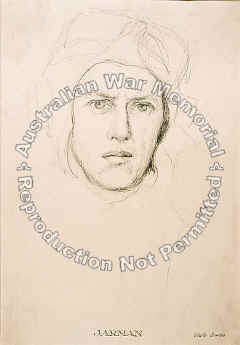
|
| Portrait of Squadron Leader Eric G D
Jarman, DFC, Bomber Command, 'C' Flight, 460 Squadron, RAAF,
wearing C-type flying helmet, flying goggles and oxygen mask. This
is a study for the painting 'Bomber crew'. |
Information
regarding the other crew members is still vague and sketchy; but even
before the war ended it became evident that Flying-Officer Lynch was the
sole survivor. The Air Ministry's Research and Inquiry Service are,
however, still expertly and systematically combing Europe and the final
resting-place of these gallant airmen may yet be found.
M.
H. S.
Lest We Forget |